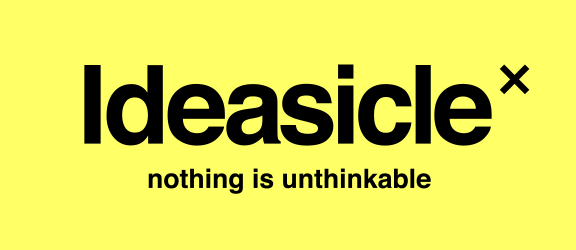Ideas Are Accidents Waiting To Happen
We like to think ideas are in our control. That we can sit down, think, and boom, an idea will happen. And that may happen for some, sometimes. But more often than not an idea hits you when you least expect it. In the shower, while gardening, or even by accident. I was curious about accidental ideas and did a little research. What follows are several great examples of these accidents and then ways we might be able to encourage happy accidents to occur.
Accidents can change the world
Accidental Toy. In 1943 Richard James, a naval engineer, was trying to develop a new type of spring that would keep sensitive equipment steady on ships. One of the prototypes fell off his desk and started "walking" down a stack of books and the Slinky was born.
Accidental Erection. In the 1990s Pfizer scientists were trying to develop a new medication to treat angina (chest pain) when they discovered that one of the side effects of the drug was improved erectile function. This led to the development of Viagra, which became one of the most successful drugs in history.
Accidental Cure. Scottish biologist Alexander Fleming discovered the first antibiotic, penicillin, in 1928. It happened when he noticed that a mold called penicillium notatum had contaminated one of his petri dishes, killing the bacteria he was growing.
And there are so many more. Coca Cola was originally meant to be a medicine. Teflon, post-it notes, and the X-ray machine were all the result of fantastic accidents. But can we make these accidents happen?
Accidental ideas require a witness
How many accidental ideas happen, but go unnoticed either because those nearby aren’t open to other possibilities or are so focused on the task at hand they are unable to see anything else? It reminds me of the invisible gorilla test. Ever see that? It was a fascinating study where subjects were shown a video of several people passing basketballs around and were asked to count the number of passes that were made between the people wearing white (half wore white, half wore black). It was a fairly chaotic scene with all the people moving, dribbling sometimes, passing other times. Actually, take a look for yourself:
Apparently roughly 50% of the subjects were shocked to learn afterwards that there was a gorilla in the scene at all. They completely missed it. To me, that gorilla represents accidental ideas that go unnoticed. This experiment reveals two things: that we are missing a lot of what goes on around us, and that we have no idea that we are missing so much.
Train yourself to notice accidental ideas.
First, believe that ideas are everywhere. There’s a study that proved that when people took a pill they were told would make them more creative, they were actually more creative. What does that mean? You gotta believe. If you believe that ideas are everywhere, you are more likely to see them.
Second, exaggerate how conscious you are about finding accidental ideas. Play a game where you pretend an accidental idea is right in front of you somewhere, but you just have to find it. Do this once a day and you’ll start programming yourself to be on the look, always.
Third, pay attention to your instincts. Sometimes you may have a gut feeling that there’s more in front of you than you can see. Pay attention to that feeling because oftentimes your subconscious mind has already found the accidental idea, but it just hasn’t surfaced yet. In times like these, play that game mentioned in #2 above and you’ll probably find it.
Fourth, increase the likelihood of accidents happening. Car accidents tend to happen at busy intersections, so create metaphorical busy intersections. We do that at Ideasicle X by having four brilliant people working on an assignment together, posting, building, and riffing on each other’s ideas. Each of those individual posts are potential accidents waiting to happen with someone else on the team. But you don’t need our virtual model to get a similar effect. Go to a museum or a baseball game with a creative problem in mind and look around for potential accidents. Or bring in others to brainstorm in the office - getting multiple perspectives colliding on a topic is sure to generate some fine looking accidents.
The more I learn about creativity and ideas, the more I realize it’s as much about “coming up with” ideas internally as it is about allowing seemingly irrelevant information from the outside into our creative thought process.
And then you’ll see accidental ideas are not an accident at all.
Will Burns is the Founder & CEO of the revolutionary virtual-idea-generating company, Ideasicle X. He’s an advertising veteran from such agencies as Wieden & Kennedy, Goodby Silverstein, Arnold Worldwide, and Mullen. He was a Forbes Contributor for nine years writing about creativity in modern branding. Sign up for the Ideasicle Newsletter and never miss a post.


